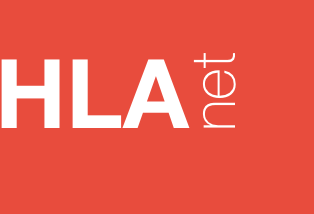Tissue Antigens 83: 307-323, 2014
The HLA-net Gene[rate] pipeline for effective HLA data analysis and its application to 145 population samples from Europe and neighbouring areas
J.M. Nunes, S. Buhler, D. Roessli, A. Sanchez-Mazas and the HLA-net 2013 collaboration §
Abstract
In this review, we present for the first time an integrated version of the GENE[RATE] computer tools which have been developed during the last 5 years to analyse human leukocyte antigen (HLA) data in human populations, as well as the results of their application to a large dataset of 145 HLA-typed population samples from Europe and its two neighbouring areas, North Africa and West Asia, now forming part of the GENE[VA] database. All these computer tools and genetic data are, from now, publicly available through a newly designed bioinformatics platform, HLA-net, here presented as a main achievement of the HLA-NET scientific programme. The GENE[RATE] pipeline offers user-friendly computer tools to estimate allele and haplotype frequencies, to test Hardy–Weinberg equilibrium (HWE), selective neutrality and linkage disequilibrium, to recode HLA data, to convert file formats, to display population frequencies of chosen alleles and haplotypes in selected geographic regions, and to perform genetic comparisons among chosen sets of population samples, including new data provided by the user. Both numerical and graphical outputs are generated, the latter being highly explicit and of publication quality. All these analyses can be performed on the pipeline after scrupulous validation of the population sample’s characterisation and HLA typing reporting according to HLA-NET recommendations. The GENE[VA] database offers direct access to the HLA-A, -B, -C, -DQA1, -DQB1, -DRB1 and -DPB1 frequencies and summary statistics of 145 population samples having successfully passed these HLA-NET ‘filters’, and representing three European subregions (South-East,North-East and Central-West Europe) and two neighbouring areas (North Africa, as far as Sudan, and West Asia, as far as South India). The analysis of these data, summarized in this review, shows a substantial genetic variation at the regional level in this continental area. These results have main implications for population genetics, transplantation and epidemiological studies.
Author list of the HLA-net 2013 collaboration
- M. Andreani, Laboratory of Immunogenetics and Transplant Biology, IME Foundation, Rome, Italy
- S. Benhamamouch, Département de Biotechnologie, Faculté des Sciences, University of Oran, Algeria
- M. Boldyreva, Institute of Immunology FMBA of Russia, Moscow, Russia
- A. Canossi, Istituto CNR Trapianti D’organo e l’Immunocitologia, L’Aquila, Italy
- J. Chiaroni, Université de la Méditerranée, CNRS, EFS, Marseilles, France
- C. Darke, Welsh Blood Service, Wales, United Kingdom
- J. Di Cristofaro, Université de la Méditerranée, CNRS, EFS, Marseilles, France
- V. Dubois, Etablissement Français du Sang (EFS) Rhône-Alpes, Lyon, France
- N. Elamin, Institute for Transfusion Medicine, Hannover Medical School, Hannover, Germany
- J.-F. Eliaou, Department of Immunology, Hôpital Saint-Eloi, CHRU, Montpellier, France
- K. Fadhlaoui-Zid, Laboratory of Genetics, Immunology and Human Pathology, University Tunis El Manar, Tunisia
- G.F. Fischer, Department for Blood Group Serology, Medical University Vienna, Austria
- Z. Grubic, University Hospital Zagreb, Zagreb, Croatia
- T. Jaatinen, Finnish Red Cross Blood Service, Helsinki, Finland
- L. Kolesar, Institute for Clinical and Experimental Medicine, Prague, Czech Republic
- D. Ligeiro, Lisbon Center for Blood and Transplantation, Instituto Português de Sangue e Transplantaçâo, IP, Lisbon, Portugal
- M.L. Lokki, Transplantation Laboratory, Haartman Institute, University of Helsinki, Finland
- N. Mehra, All India Institute of Medical Sciences, New Delhi, India
- G. Nicoloso, Foundation Swiss Blood Stem Cells, Bern, Switzerland
- D. Papaioannou Voniatis, Ministry of Health, Nicosia, Cyprus
- C. Papasteriades, Department of Immunology and Histocompatibility, Evangelismos Hospital, Athens, Greece
- D. Piancatelli, CNR, Institute of Translational Pharmacology, L’Aquila, Italy
- F. Poli, Fondazione IRCCS Ca’Granda – Ospedale Maggiore Policlinico, Milan, Italy
- I. Romon Alonso, Laboratorio de Histocompatibilidad, Hospital Universitario Marques de Valdecilla, Santander, Spain
- A. Slavcev, Institute for Clinical and Experimental Medicine, Prague, Czech Republic
- M. Spiroski, IIBHG, Faculty of Medicine, Skopje, Republic of Macedonia
- M. Spyropoulou-Vlachou, Immunology Department, Tissue Typing Laboratory, General University Hospital of Athens Alexandra, Athens, Greece
- G. Sulcebe, Laboratory of Immunology and Tissue Typing, University Hospital Center, Tirana, Albania
- T. Suslova, Chelyabinsk State University, Chelyabinsk, Russia
- M. Testi, Laboratory of Immunogenetics and Transplant Biology, IME Foundation, Rome, Italy
- J.-M. Tiercy, National Reference Laboratory for Histocompatibility, University Hospital Geneva, Switzerland
- M. Toungouz Nevessignsky, Erasme Hospital, Brussels, Belgium
- A. Varnavidou-Nicolaidou, Histocompatibility & Immunogenetics Laboratory, Nicosia General Hospital, Cyprus
- B. Vidan-Jeras, Blood Transfusion Center of Slovenia, Ljubljana, Slovenia
